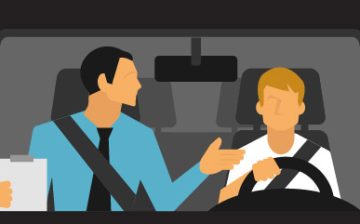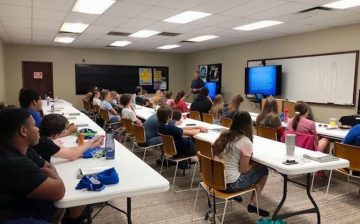How Long Does It Take to Get Your Certificate from an Online Driver’s Education Course in Illinois?
Embarking on the journey of obtaining a driver’s license is an exciting venture, and choosing an online driver’s education course in Illinois is a popular option for many. As you set out on this path, one burning question may be on your mind: How long does it take to get your certificate from an online driver’s education course in Illinois? Let’s dive into the details.
Online Driver’s Education in Illinois
In the digital age, the convenience of online driver’s education cannot be overstated. Illinois, like many states, offers a comprehensive online program designed to educate and prepare aspiring drivers. Before delving into the timeframe for obtaining your certificate, it’s essential to understand the structure of online driver’s education in Illinois.
Course Duration
The standard duration of online driver’s education courses often varies, but a typical program in Illinois might span several weeks. The duration is influenced by various factors, including the curriculum’s depth, the learner’s pace, and the specific course provider.
Illinois-Specific Requirements
Each state may have its own set of requirements for obtaining a driver’s education certificate. In Illinois, it’s crucial to familiarize yourself with the state-specific guidelines to ensure a smooth process. This may involve completing a set number of hours of instruction and successfully passing assessments.
Choosing the Right Course
Selecting the right online driver’s education course is a critical decision. Consider factors such as the course content, ease of use, and the reputation of the provider. Reading reviews and testimonials from other learners can provide valuable insights into the effectiveness of a particular course.
The Learning Process
Online driver’s education courses are structured to cover various aspects of road safety and driving skills. The learning process involves engaging modules and lessons that equip learners with the knowledge needed to become responsible and safe drivers.
Interactive Elements
Many online courses incorporate interactive elements such as simulations, quizzes, and real-world scenarios. These elements not only make the learning experience more engaging but also enhance knowledge retention.
Self-Paced Learning
One of the advantages of illinois drivers ed is the flexibility it offers. Learners can progress through the material at their own pace, tailoring the course to fit their schedules and learning styles.
Instructor Support
While the courses are primarily self-paced, having access to instructors for support is invaluable. Clear communication channels with instructors ensure that learners can seek clarification on any challenging topics.
Submitting Assignments and Tests
Successfully completing assignments and tests is a crucial aspect of the online driver’s education process. Understanding the evaluation criteria and following guidelines will contribute to a smoother journey toward obtaining the certificate.
Certificate Issuance Process
Once the course requirements are met, the process of obtaining the certificate begins. The timeframe for certificate issuance can vary, but most providers strive to process and deliver certificates promptly.
Expedited Options
For those in a hurry to obtain their certificates, some online driver’s education programs offer expedited options for an additional cost. These options can shorten the waiting time significantly.
Common Delays
Despite the streamlined nature of online education, some delays may occur in the certificate issuance process. Addressing these delays promptly and efficiently is key to moving forward with the licensing process.
Success Stories
To inspire confidence in prospective learners, hearing success stories from individuals who have successfully completed online driver’s education in Illinois can be enlightening. These stories highlight the positive impact of the courses on real people’s lives.
Conclusion
In conclusion, the journey to obtaining a certificate from an online driver’s education course in Illinois is both educational and rewarding or Adult drivers ed certificate. By choosing the right course, understanding the process, and staying committed to the learning experience, you can confidently navigate the path toward becoming a licensed driver.
Frequently Asked Questions
- How long does it typically take to complete an online driver’s education course in Illinois?
The duration varies, but most courses span several weeks, taking into account factors such as curriculum depth and individual pace.
2. Are there expedited options available for obtaining the certificate quickly?
Yes, some courses offer expedited options for an additional cost, significantly reducing the waiting time.
3.What are the common reasons for delays in the certificate issuance process?
Delays may occur due to various reasons, including incomplete course requirements or administrative issues. Addressing these promptly is essential.
4.Is instructor support available during the online driver’s education course?
Yes, learners typically have access to instructors for support and clarification on challenging topics.
5. Can I trust online reviews and testimonials when choosing a driver’s education course?
Reviews and testimonials can provide valuable insights into the effectiveness of a course, but it’s essential to consider a variety of sources for a well-rounded understanding.







